Introduction to Short Haired Cat Breeds
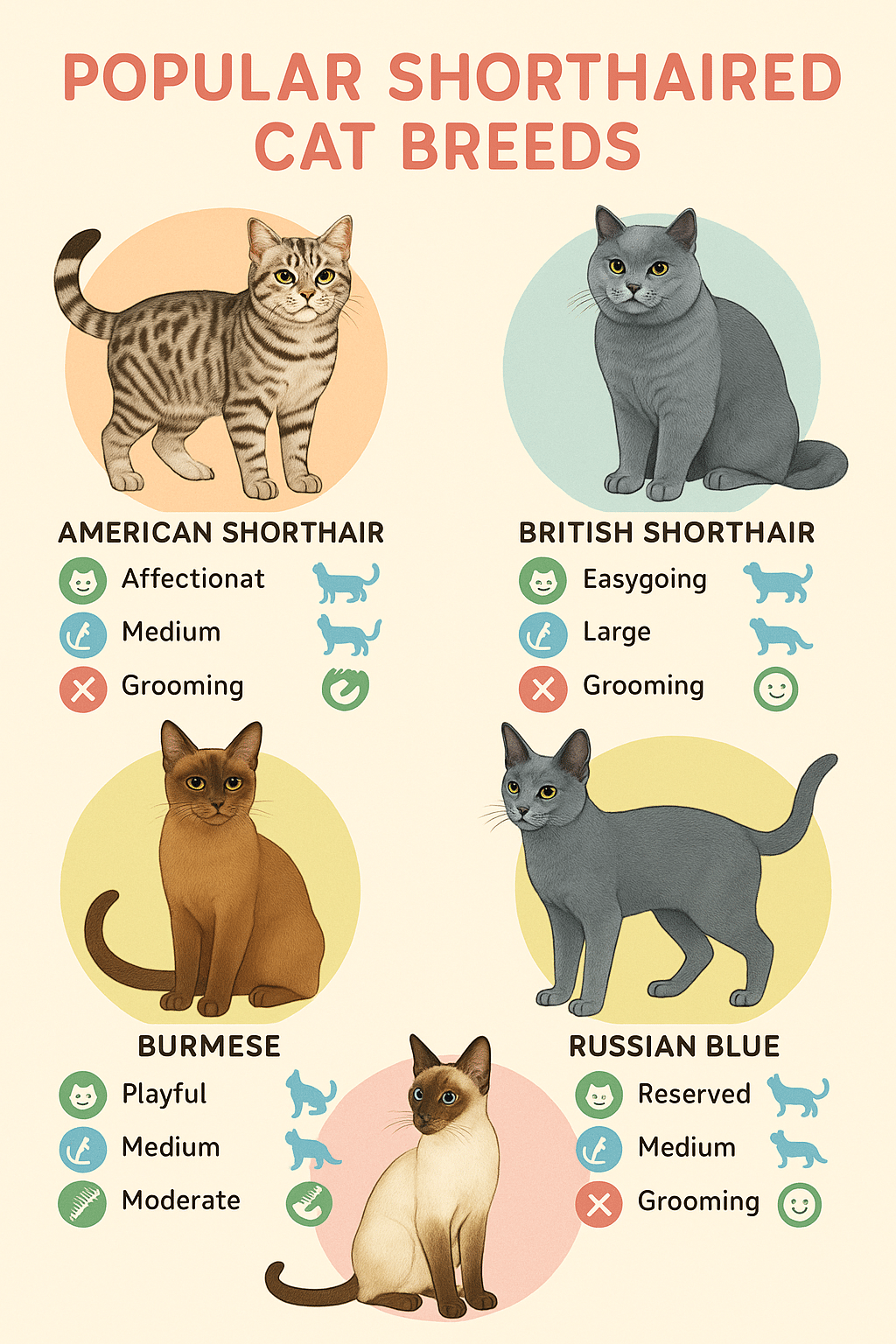
If you’re a pet owner or a family considering adding a feline friend to your home, you’ve likely explored the delightful world of short haired cats. Known for their sleek coats, manageable grooming needs, and charming personalities, short haired cat breeds have captivated families everywhere. The short haired cat breeds category covers diverse breeds, each offering unique traits—from playful antics to cuddly companionship.
In this article, I’m excited to walk you through the top five short haired cat breeds perfect for families and pet owners. We’ll dive deep into their distinct physical features, temperament, care requirements, and how they fit into different family lifestyles. Along the way, I’ll also explore crucial information on training, health, nutrition, and ethical adoption to help you make a well-informed decision tailored to your home.
Whether you’re seeking a hypoallergenic companion, a playful indoor cat, or a low-shedding breed that suits apartment living, this detailed guide will cover all the essentials. So, let’s embark on a journey to discover the best short haired cat breeds for families, ensuring your experience with these beloved pets is fulfilling and joyful.
Overview of Short Haired Cats’ Characteristics
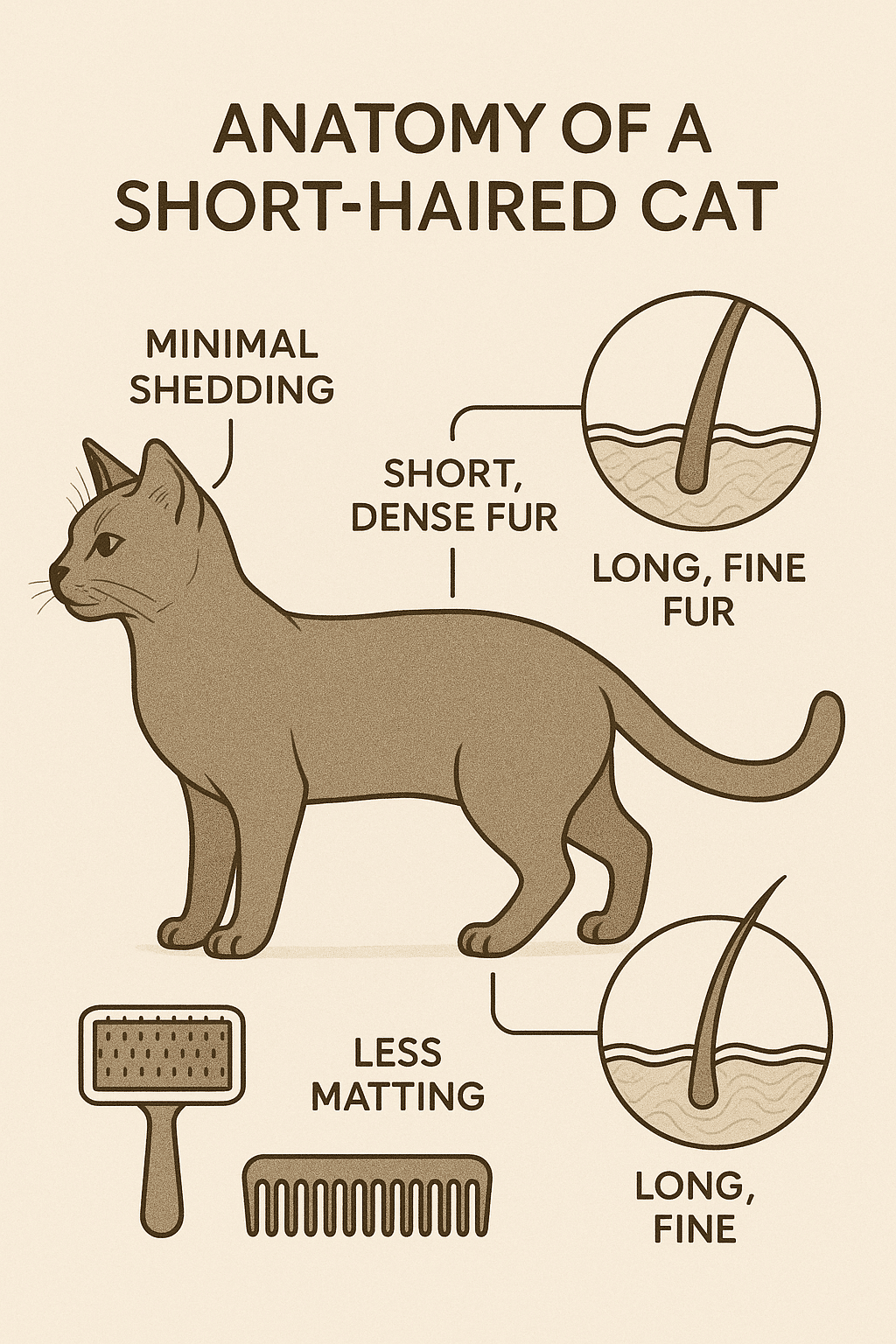
Short haired cats typically feature a coat length that lies close to their body, providing a sleek, smooth appearance and a touchably soft texture. This coat type has several practical benefits: it usually requires less grooming than long-haired breeds, tends to shed less, and can be gentler on allergy sufferers.
Physically, these cats are incredibly varied. Some boast muscular builds, while others are slender and elegant. Their coat colors and patterns span the spectrum, from solid and tabby to spotted and bi-color—a visual feast for cat enthusiasts.
Temperamentally, short haired cats often possess a balanced blend of playfulness and affection. While some breeds are notably active and curious, others may prefer quiet companionship. This variation allows families to choose a cat that best matches their activity level and lifestyle.
To sum up, the key traits of short haired cat breeds include:
- Low to moderate grooming needs due to short fur
- Moderate shedding, varying by breed and individual genetics
- Wide range of temperaments from laid-back to highly energetic
- Adaptability to different living environments, including apartments
- Affectionate and trainable personalities that suit family life
These characteristics make short haired cats a practical and lovable choice for many homes.
Benefits of Owning Short Haired Cats for Families
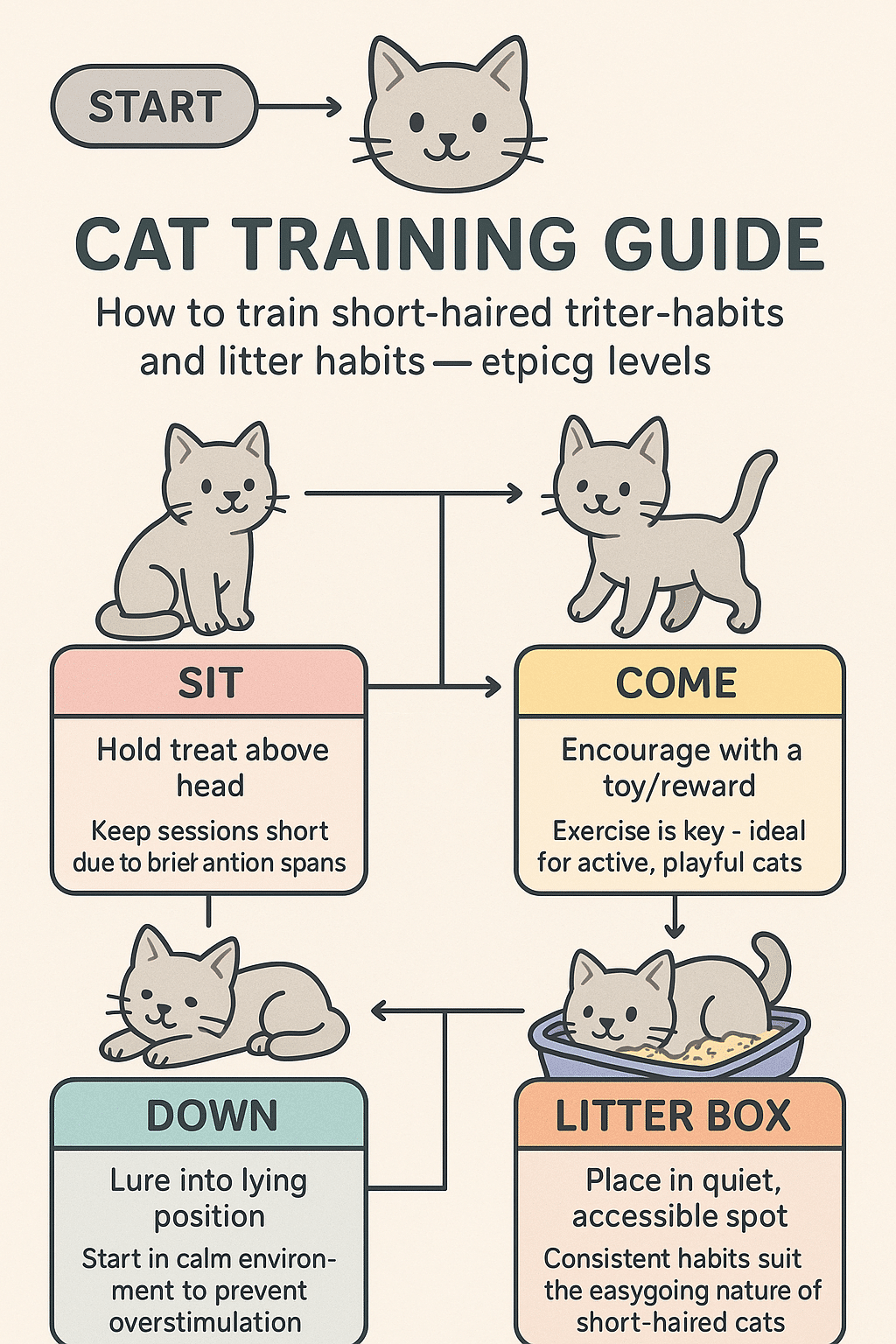
Owning a short haired cat offers multiple advantages, especially for families juggling busy schedules. Here are some top benefits:
-
Ease of Grooming: Unlike long-haired breeds that require daily brushing and care to prevent mats and tangles, many short haired breeds thrive with weekly grooming, freeing up your time.
-
Lower Shedding Impact: Many short haired cats shed less noticeably, which can mean fewer allergens in your home and less vacuuming—a real win for households sensitive to pet hair.
-
Affectionate and Social: Numerous short haired breeds excel in family settings because they’re naturally sociable and enjoy interaction with children and other pets.
-
Versatile Living Adaptation: Whether you have a sprawling home or an apartment, many short haired breeds adapt well. They enjoy indoor play and can stay stimulated without large outdoor spaces.
-
Health and Longevity: Some short haired breeds exhibit robust health with fewer hereditary issues, contributing to a longer, happier life with your family.
From helping manage pet allergies to making socialization and training straightforward, short haired cats present a harmonious blend of convenience and companionship. This makes them a standout choice for families seeking a pet that’s not just cute but also compatible with their daily lives.
Understanding Cat Breed Origins and History
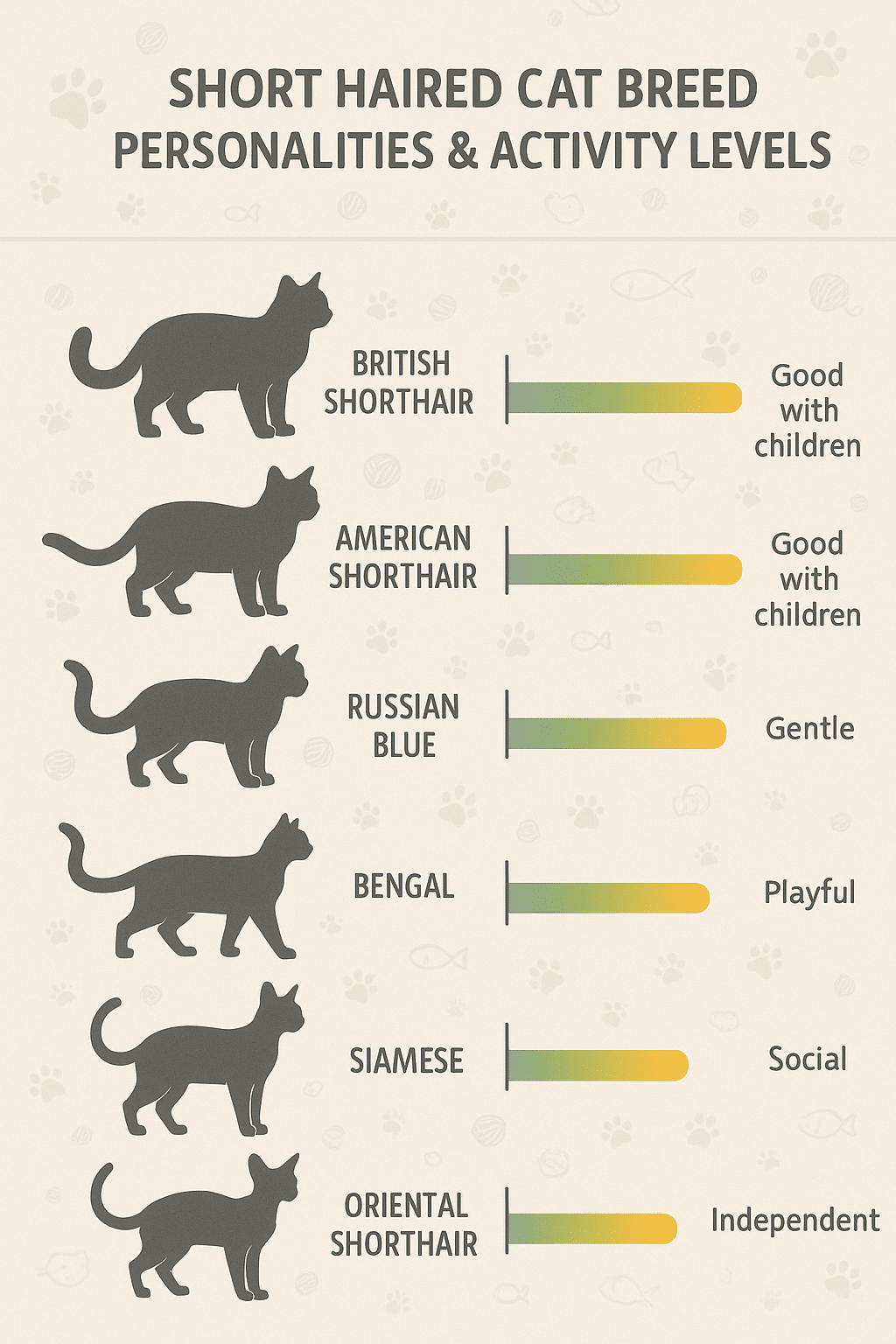
The Evolution of Short Haired Cats
Short haired cats descend from ancient domestic cats, whose coats evolved for functionality and survival. The short fur allowed easier mobility and suited various climates, while humans selectively bred cats for traits like temperament and coat patterns.
Modern short haired breeds owe their existence to centuries of both natural selection and deliberate breeding efforts. They generally share a common ancestor with the domestic shorthair — a class of mixed-breed cats renowned for their adaptability.
Historically, some well-known short haired breeds emerged from specific regions or cultures. For example, the American Shorthair stems from cats brought by settlers to North America, originally bred for hunting vermin on ships. The Burmese breed traces back to Asia, prized for its golden-hued, satin-like short coat and affectionate nature.
Role of Cat Breed Recognition Organizations in Preservation
Organizations such as the Cat Fanciers’ Association (CFA) and The International Cat Association (TICA) play vital roles in recognizing and preserving short haired cat breeds. These bodies establish breed standards based on physical traits and temperament, ensuring breeders maintain consistency.
They also promote responsible breeding, health screening, and ethical practices, helping prevent hereditary diseases and supporting breed diversity. By endorsing show events and pedigree registries, these organizations help keep knowledge of short haired breeds alive and accessible, benefiting families who want well-documented and healthy cats.
Top 5 Short Haired Cat Breeds for Families
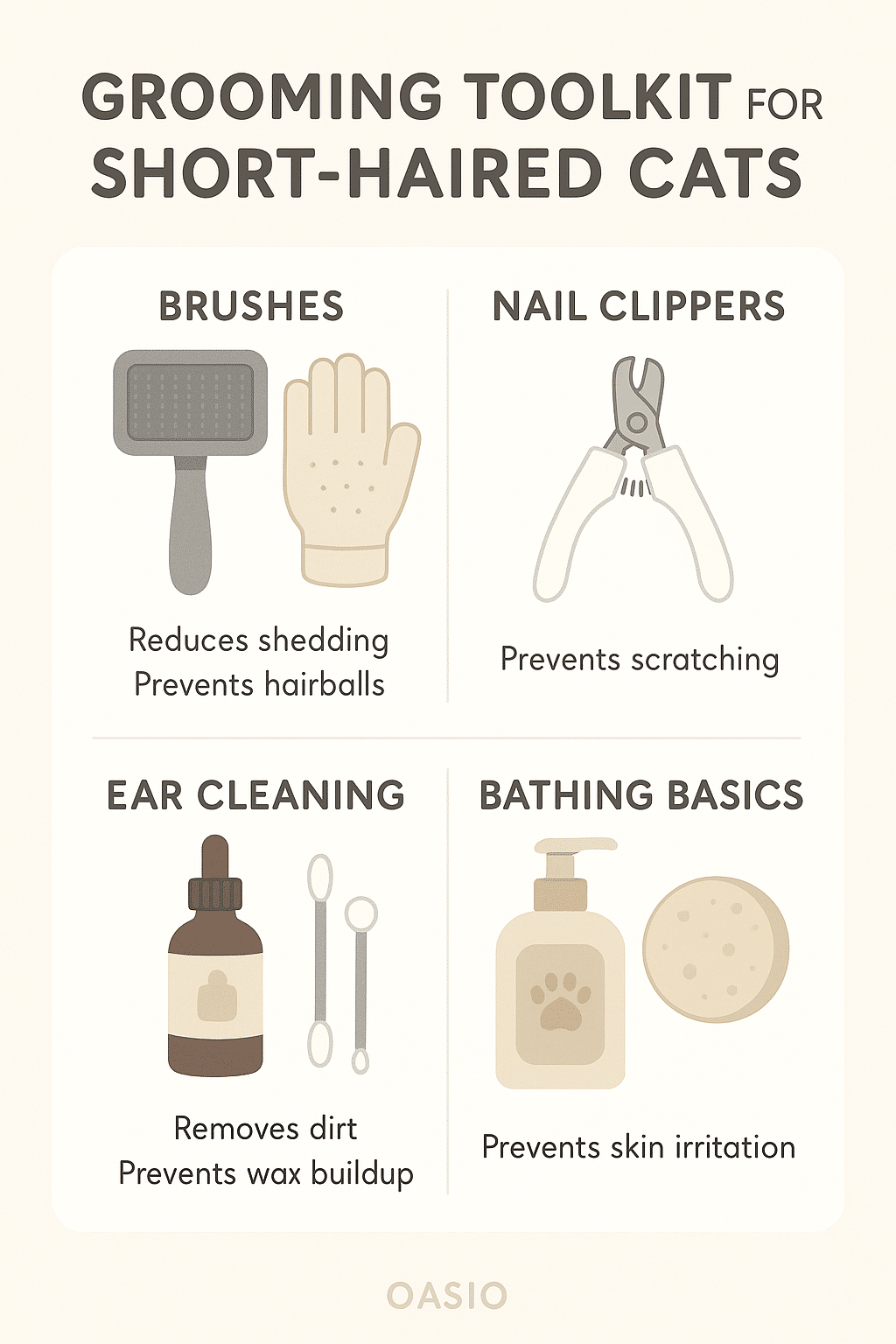
American Shorthair: The All-Rounder Family Cat
Physical Characteristics and Coat Care
The American Shorthair (ASH) is a medium-to-large cat with a sturdy build and a classic round face. Its dense, short coat comes in over 80 color and pattern variations—from silver tabby to calico. The coat’s resilience makes it relatively easy to maintain with weekly brushing.
Temperament and Compatibility with Children
ASH cats are renowned for their even temperament. They display a calm demeanor, exhibit patience with children, and generally tolerate other pets, making them outstanding family cats. They are also independent yet affectionate, striking a nice balance that suits households with varying activity levels.
Grooming and Shedding Expectations
While American Shorthairs shed seasonally, simple grooming sessions help control loose hair. Because of their short, dense fur, daily grooming isn’t necessary, which is ideal for busy families.
Burmese: Affectionate and Playful Indoor Companion
Origin and Unique Traits
Originating from Burma (now Myanmar), Burmese cats possess a sleek, short coat with a distinctive sable brown shade and large golden eyes. They are medium-sized with a muscular yet compact frame.
Socialization and Training Tips for Beginners
Burmese cats are famously affectionate and social, craving human interaction. They thrive when involved in family routines and respond well to gentle training with positive reinforcement. Using clicker training and interactive play helps build trust and reduces behavioral challenges.
Low Maintenance Grooming Routine
Thanks to their fine, short hair, Burmese cats require minimal grooming. A quick weekly brushing combined with occasional nail trims keeps them comfortable and healthy.
Russian Blue: Hypoallergenic and Gentle Personality
Health and Nutrition Considerations
The Russian Blue sports a plush, silvery blue coat that is double-layered and short. This breed often suits families with mild allergies since its coat produces fewer allergenic proteins. Nutritionally, Russian Blues do well on balanced diets rich in omega fatty acids that support skin and coat health.
Suitability for Allergy-Sensitive Households
Due to their hypoallergenic qualities, Russian Blues are a top pick for allergy-sensitive families. They produce less dander and shed minimally, reducing exposure to common cat allergens.
Behavioral Traits and Enrichment Activities
Generally gentle and shy, Russian Blues enjoy calm environments with plenty of mental enrichment. Puzzle feeders, interactive toys, and quiet play sessions keep them stimulated, preventing boredom-related behaviors.
Oriental Shorthair: Energetic and Intelligent Breed
Coat Care and Shedding Levels
Oriental Shorthairs have sleek, fine fur in numerous colors and patterns. Their short coat sheds minimally and requires simple grooming—usually a quick weekly brush suffices.
Training Ease and Mental Stimulation Needs
Highly intelligent and inquisitive, this breed excels with training that challenges their minds. They respond well to commands, tricks, and interactive games, making them a great choice for families eager to engage actively with their cats.
Interaction with Children and Other Pets
Orientals tend to be vocal and attention-seeking, bonding closely with family members, including children and other pets. Their playful nature requires a patient introduction to young children, but they typically integrate well into lively households.
Cornish Rex: Rare Breed with Unique Curly Coat
Distinctive Coat and Grooming Needs
The Cornish Rex boasts a one-of-a-kind curly, soft coat that feels like velvet. Because this coat is short and lacks guard hairs, shedding is minimal, but they do benefit from gentle weekly grooming to keep their skin healthy.
Playfulness and Adaptability to Apartment Living
Cornish Rex cats are superfine entertainers who love playtime and social interaction. Their energetic temperament and compact size make them perfect for apartment dwellers looking for a highly engaging feline friend.
Social Behavior and Scratch Nail Care
They enjoy company and thrive with structured play and appropriate scratching posts to protect furniture and nails. Regular nail trims are recommended to prevent damage, especially if their scratching is particularly vigorous.
Selecting the Right Short Haired Cat Breed for Your Family
Assessing Allergies and Hypoallergenic Options
Family members’ sensitivity to cat allergens is a major factor to consider. Breeds like the Russian Blue and Cornish Rex typically produce fewer allergens, making them better suited for allergy-prone individuals. Investing in HEPA air purifiers and frequent cleaning also helps maintain a comfortable home environment.
Matching Cat Temperament to Family Lifestyle
Reflect on your family’s daily activity level. For high-energy, playful homes, breeds like the Oriental Shorthair or Cornish Rex thrive. For quieter environments or homes with young children, consider the gentle American Shorthair or Burmese.
Considering Grooming and Maintenance Commitment
Short haired cats generally reduce grooming efforts, but some breeds still require weekly brushing or nail care. If your family has limited time, breeds with lower maintenance coats and moderate shedding, like the American Shorthair, may fit your routine best.
Training and Socialization Strategies for Short Haired Cats
Importance of Early Socialization for Behavioral Development
Socializing kittens from a young age is essential — exposing them gently to children, visitors, and other pets reduces fear and aggression. Handling them regularly, offering treats, and creating positive associations encourages an affectionate, balanced adult cat.
Basic Training Techniques for Beginners
Using rewards like treats and praise, you can teach your short haired cat commands like “come,” use of scratching posts, and litter box habits. Consistency, patience, and short training sessions yield the best results.
Creating a Cat-Friendly Home Environment with Enrichment
Provide toys, climbing trees, and interactive games to stimulate natural instincts. Rotate toys to keep interest high, use window perches for outdoor views, and schedule daily playtime, fostering mental and physical well-being.
Health, Nutrition, and Routine Care for Short Haired Cats
Regular Veterinary Care and Preventive Measures
Annual checkups, vaccinations, dental care, and parasite prevention are key to maintaining your cat’s health. Monitoring weight and behavior changes is vital for early detection of health issues.
Balanced Diet for Optimal Coat and Health
Feed high-quality, species-appropriate food rich in protein and fatty acids to support skin and coat condition. Avoid fillers and artificial additives that may cause allergies or digestion problems.
Managing Shedding and Grooming Tips at Home
Even short haired cats shed seasonally, so regular brushing and good vacuuming habits reduce loose hair in your living space. Using grooming gloves or deshedding tools can further minimize shedding.
Unique Insights: The Role of Play and Mental Stimulation in Shorthair Cats’ Well-Being
How Play Enhances Bonding Between Families and Cats
Interactive playtime not only keeps cats agile but also strengthens bonds. Families often find that games like feather wands and laser pointers create moments of joy and connection with their cats.
Innovative Enrichment Ideas for Indoor Short Haired Cats
Puzzle feeders, hiding treats in toys, or building DIY playhouses keep curiosity alive. Introducing scents and textures stimulates natural hunting instincts safely indoors.
Preventing Behavioral Issues Through Stimulating Activities
Boredom can lead to scratching furniture or aggression. Regular mental and physical activity helps short haired cats release energy positively, reducing problematic behavior.
Adoption and Ethical Considerations
Working with Reputable Breeders and Adoption Centers
Select breeders who prioritize health tests and transparency. Adoption centers and rescue groups also offer wonderful options for families seeking to provide loving homes to cats in need.
Importance of Supporting Cat Breed Preservation Efforts
Contributing to organizations like CFA or TICA aids in maintaining breed health and standards, safeguarding the future of unique short haired breeds.
How to Prepare Your Home Before Bringing a Short Haired Cat
Set up a quiet space with essentials: cozy bedding, litter box, food and water bowls, scratching posts, and toys. Cat-proof hazardous areas, and introduce your new companion gradually to family members and pets.
Conclusion: Embracing the Joy of Short Haired Cats in Family Life
Choosing the right short haired cat breeds for your family is a rewarding journey filled with love, discovery, and companionship. From the adaptable American Shorthair to the elegant Russian Blue and playful Cornish Rex, each breed offers unique qualities that can seamlessly fit into your household’s rhythm. Understanding their history, care needs, and behavioral traits enriches your connection and ensures your feline friend thrives.
Whether you’re a first-time cat owner or a seasoned pet parent, the insights shared here equip you with practical, detailed knowledge to make well-informed decisions. Remember, the key to a happy family cat lies not only in selecting the breed but in fostering an environment filled with love, stimulation, and health care.
Ready to welcome a short haired cat into your life? Explore local shelters, connect with reputable breeders, and prepare your home to embrace a furry family member who will bring years of joy, warmth, and unforgettable memories. After all, these sleek, gentle companions truly become a part of the family.
FAQs
1. What are the best short haired cat breeds for families with children?
The American Shorthair and Burmese are excellent choices for families with kids due to their patient and affectionate natures. They tolerate playful children well and adapt happily to family life.
2. Are there hypoallergenic short haired cat breed options for people with allergies?
Yes, breeds like the Russian Blue and Cornish Rex are considered hypoallergenic because they produce fewer allergenic proteins and shed less, making them suitable for allergy-sensitive households.
3. Which short haired cat breeds require the least grooming?
Breeds such as the Burmese and Oriental Shorthair have low maintenance coats, requiring only minimal weekly brushing, making them ideal for busy families.
4. Can short haired cats live well in apartments?
Definitely! Breeds like the Cornish Rex and Oriental Shorthair adapt well to apartment living, especially if provided with enrichment activities and vertical climbing spaces.
5. How do I train my short haired cat to use scratching posts instead of furniture?
Use positive reinforcement by rewarding your cat with treats and praise when it uses the scratching post. Place posts near favorite scratching spots and use toys or catnip to attract them to these posts, gradually redirecting unwanted scratching behavior.
Quick Takeaways
- Short haired cats are low-maintenance, versatile pets perfect for families and pet owners.
- The top 5 short haired cat breeds for families include American Shorthair, Burmese, Russian Blue, Oriental Shorthair, and Cornish Rex.
- Hypoallergenic options like Russian Blue benefit allergy-sensitive households.
- Early socialization and gentle training help foster affectionate and well-behaved cats.
- Regular vet care, balanced nutrition, and environmental enrichment ensure a healthy, happy cat.
- Selecting the right breed depends on family lifestyle, allergy concerns, and grooming capacity.
- Adopting from reputable breeders or rescue groups supports ethical pet ownership and breed preservation.
By considering these insights and embracing your cat’s unique personality, you can build a lasting bond that enriches your family’s life for years to come.



